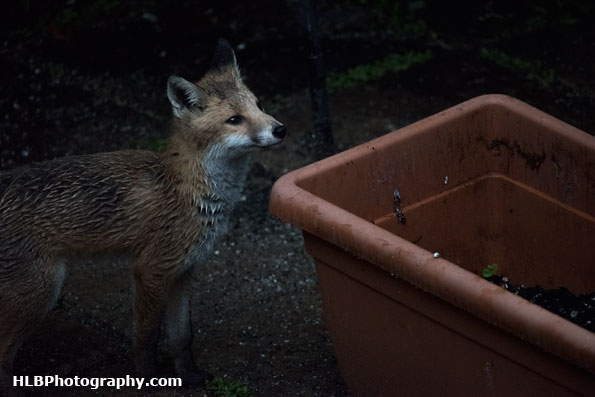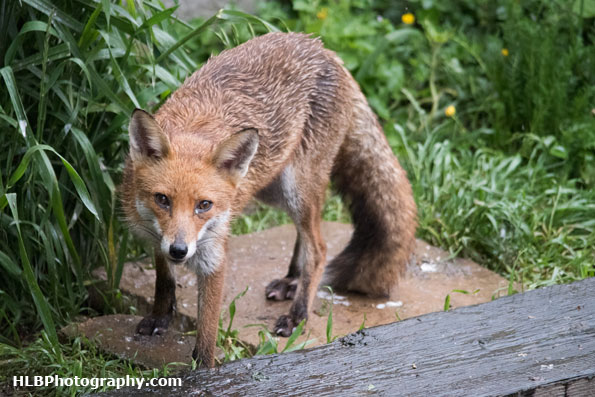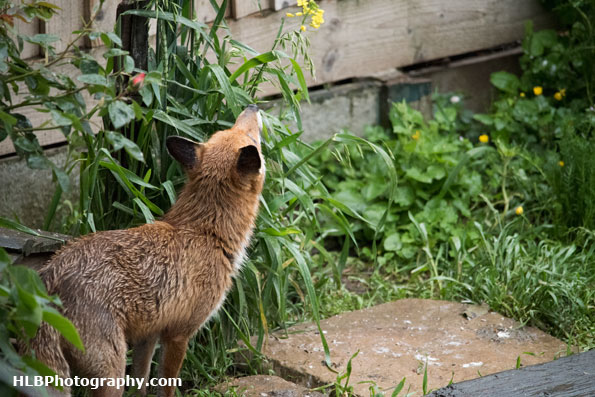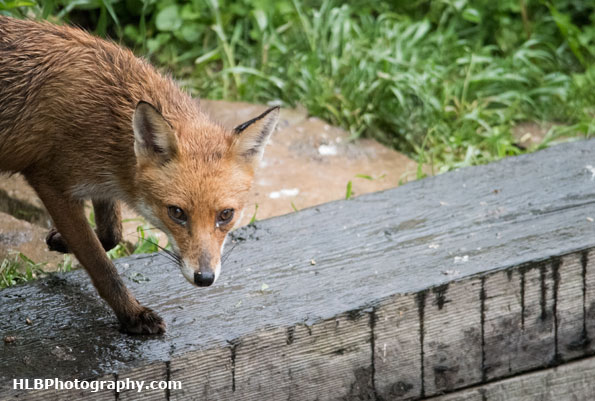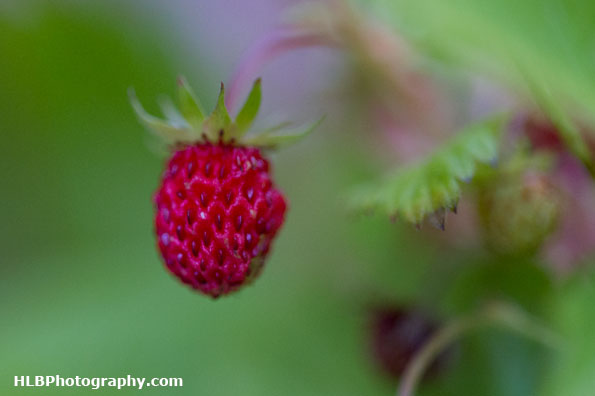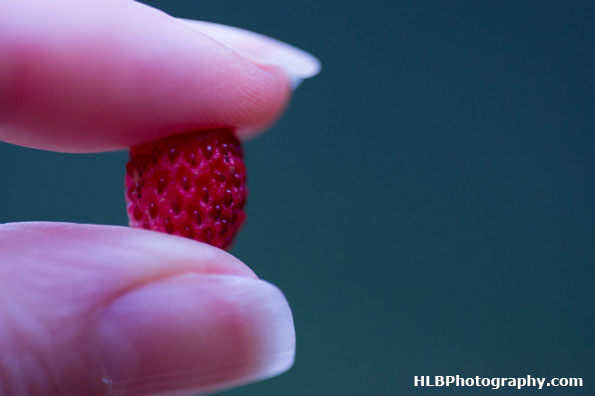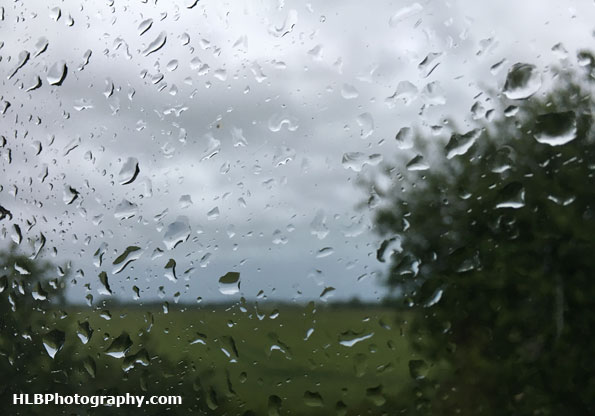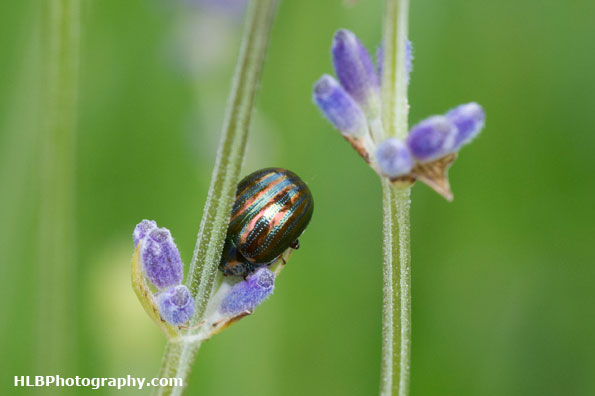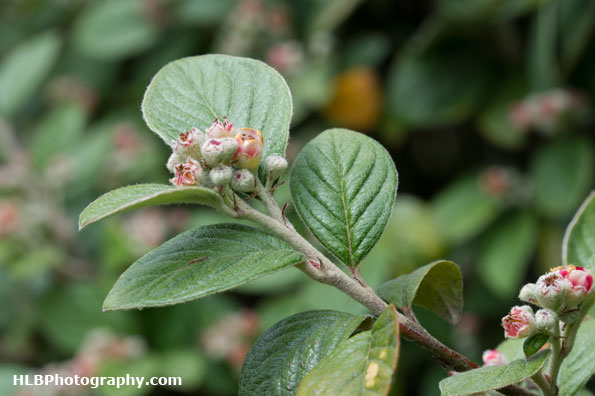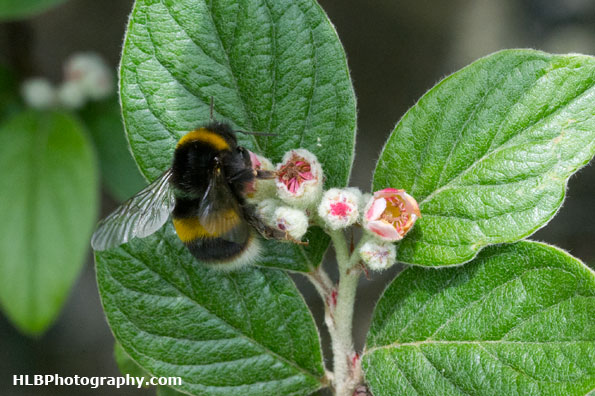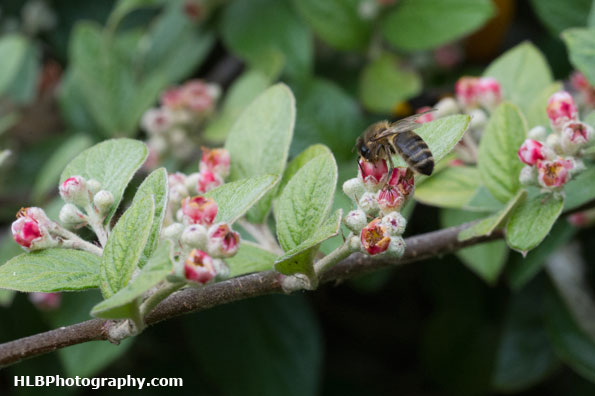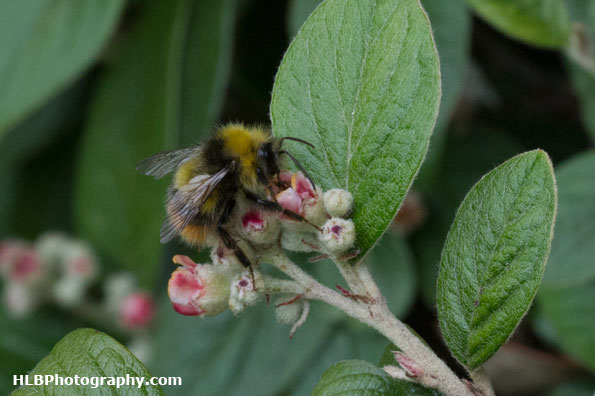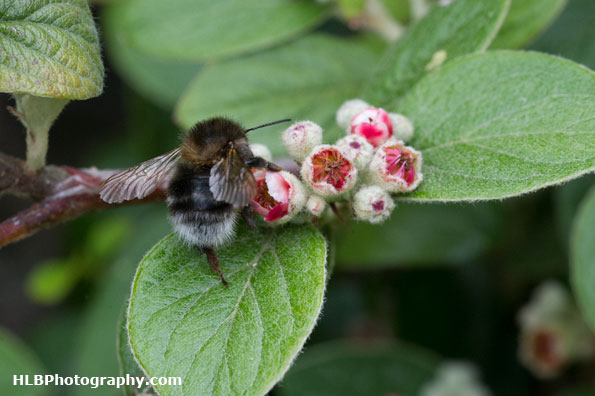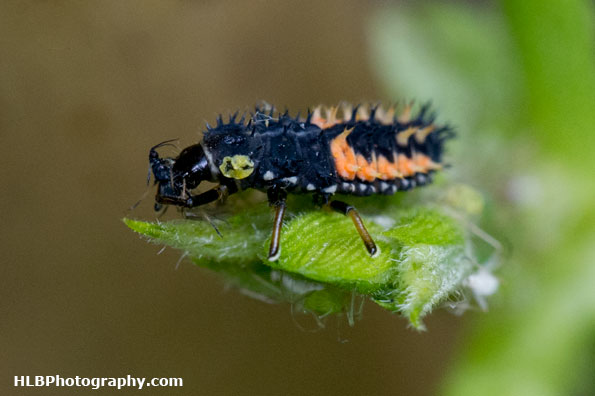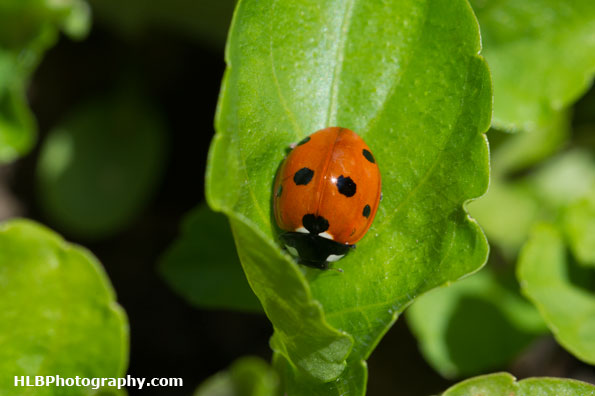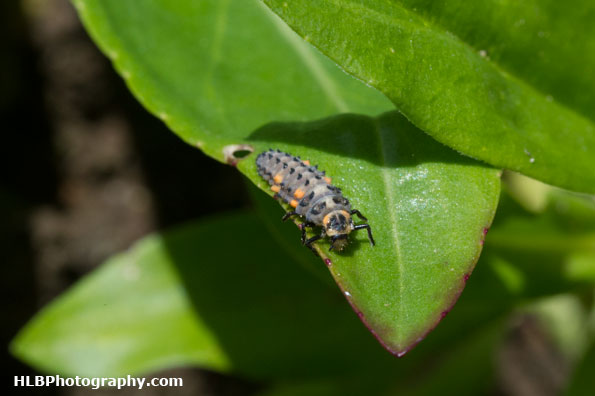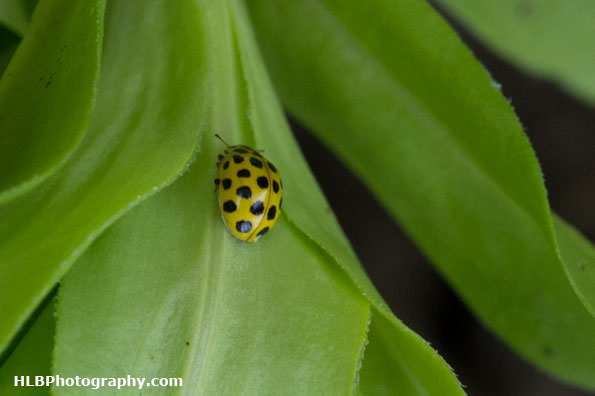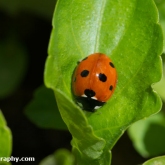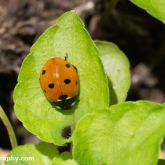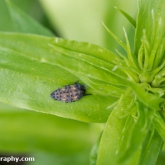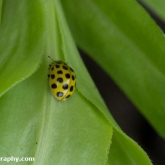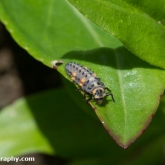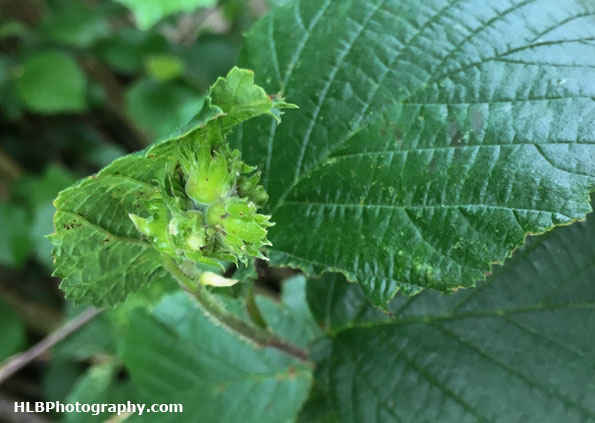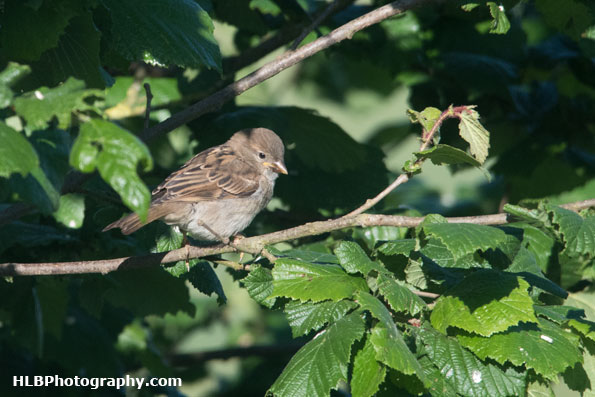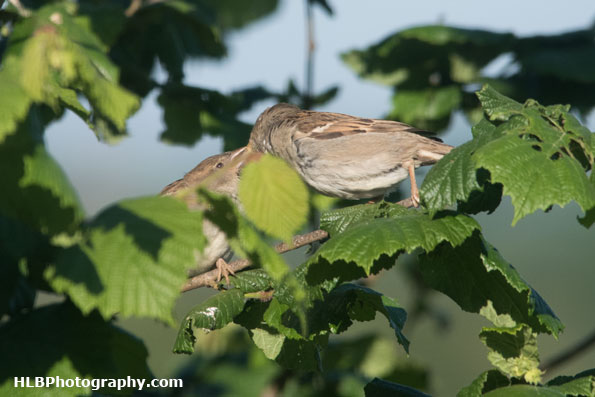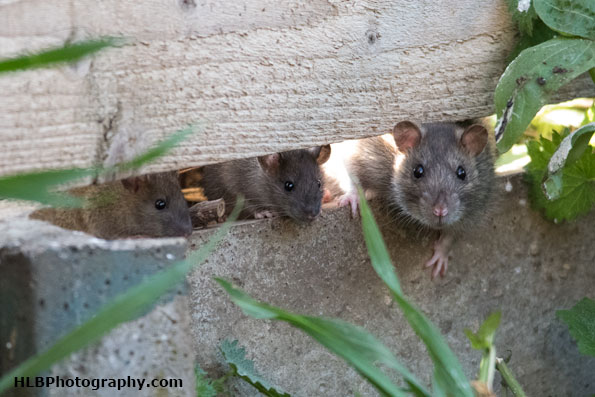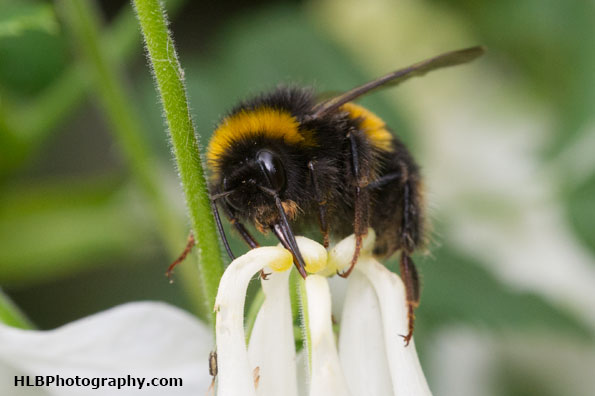The fox turned up again this evening at exactly the same time, 5.31pm! She is the same fox as there is a patch of black fur on the top section of her tail.
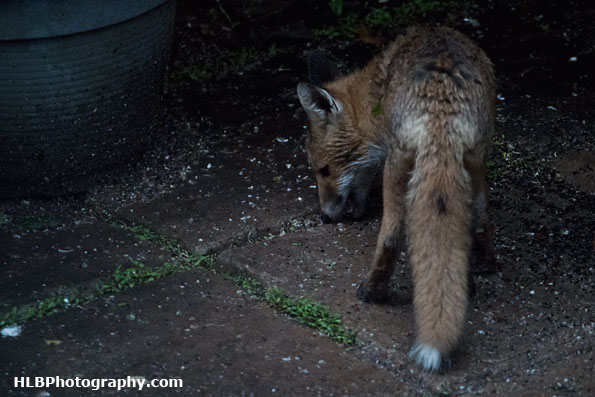
I say she; I think she’s a girl but I haven’t had a clear look at her back end to find out! She started off at the same bird feeder as yesterday but didn’t find much to eat. I thought she had vanished behind the shed but she reappeared next to the porch and made her way in front of the door and over to the other feeder. She found more food there as the seed the birds drop falls in between the paving slabs that I have not yet concreted in! She stayed for a little while looking for food. She must be really hungry to be back trying to lick up the food.
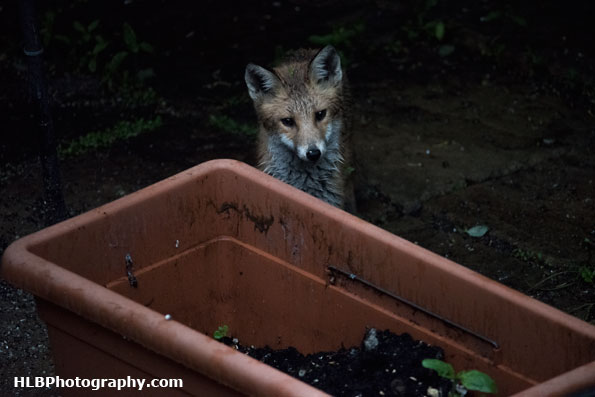
I think she might be one of this years cubs as she seems quite small and looks very young. Cubs of about her size have been seen out on the road – 5 of them with one of the parents! Thankfully this one seems to be navigating the roads okay. I don’t know if she is having issues catching food or if there just isn’t enough food about for her to catch; I have left some dog food out so she can have a little meal tonight 🙂
